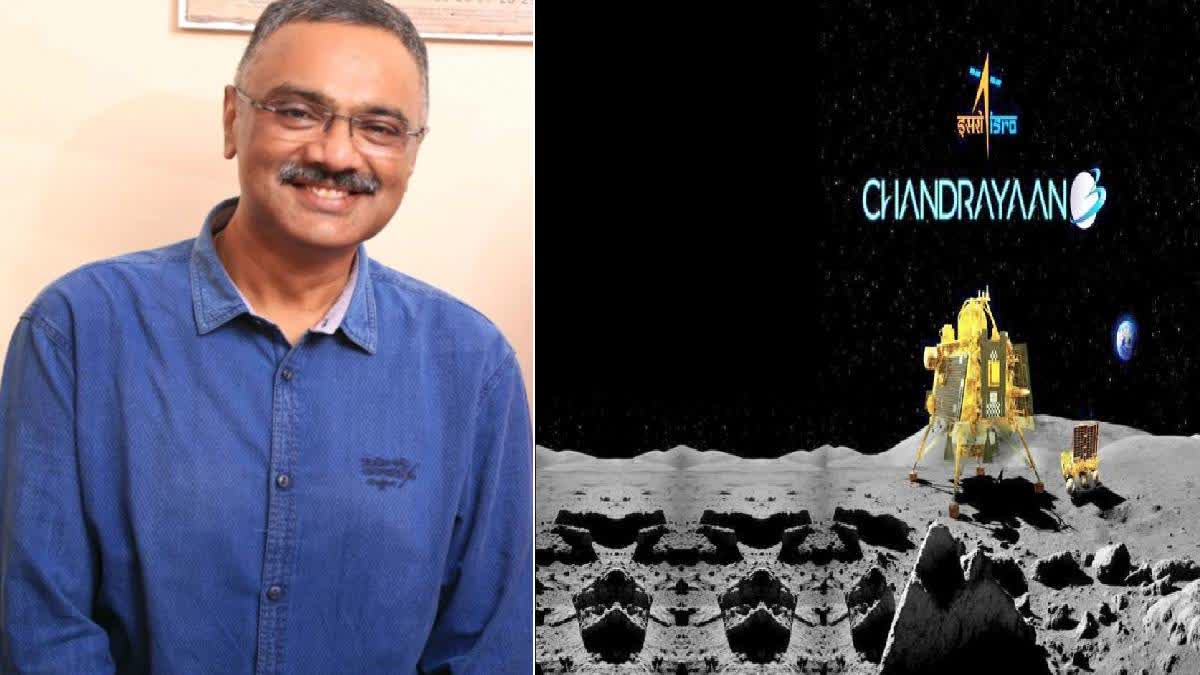Bengaluru: Chandrayaan-3 seeks to achieve a remarkable milestone by making India the first nation to achieve a successful landing on the Moon’s south pole.
The Moon, planets and celestial bodies exhibit unique patterns in their magnetic and gravitational fields around the poles. These distinct behaviours have posed challenges for missions attempting to land on the lunar south pole, resulting in previous failed attempts. Thus, a couple of innovative strategies have been adopted to overcome the existing challenges.
Extreme Speed Reduction Challenge for Vikram Lander: The Vikram lander on Chandrayaan-3 is currently flying at 25 kilometres above the Moon’s surface at a speed of 6,000 km/h. It has to slow down dramatically to just 1 metre/second in a matter of seconds. Additionally, it must execute a rapid 90° turn as it departs from its orbit. ISRO faces the challenge of making significant adjustments at extremely fast speeds.
The Propulsion Module’s Extended Mission and Fuel Efficiency: The Propulsion Module, originally anticipated to function for only three to six months, is still operational with over 150 kg of remaining fuel. This indicates its potential to continue its operations for several more years to come. When it was launched on July 14, the Propulsion Module was loaded with a full tank containing 1,696.4 kg of fuel. En route to the Moon, it executed significant manoeuvres as part of its journey. Interestingly, it used considerably less fuel than anticipated by ISRO for all of these operations.
Unveiling Lunar Mission’s Exploration and Resource Potential: The Chandrayaan-3 lunar expedition encompasses a variety of objectives, predominantly focused on investigating the lunar atmosphere, soil and rocks. The mission intends to ascertain the feasibility of utilising these lunar resources to support potential human habitation. Throughout its 14-day operation, the Pragyan rover will be dedicated to the search for water ice, a vital resource that could potentially sustain human presence on the Moon. Additionally, this water ice holds the potential to serve as propellant for spacecraft en route to distant destinations, such as Mars.
Vikram Lander's Weighty Challenge: The Vikram lander, equipped with four landing legs and four landing thrusters, possesses a total mass of 1749.86 kg, which includes an additional 26 kg for the rover. Consequently, the landing module’s weight on the Moon is approximately 2,800 kg. This increased weight adds an extra layer of complexity to ISRO’s landing endeavour.
Beyond Water Ice, Quest for Helium-3 on the Lunar Surface: The Pragyan rover will also be engaged in the search for Helium-3, commonly referred to as He-3. This isotope holds potential as a fuel source for advanced, cryogenic nuclear fusion reactions. Fusion, the same process that drives the Sun and stars, could yield an almost boundless and environment-friendly energy source on Earth devoid of radioactive waste, if effectively harnessed.
Formulating Innovative Strategies for Chandrayaan-3’s Landing: Exploring the lunar south pole has remained a popular focus in recent years despite the inherent challenges associated with landing in and around these regions. Nonetheless, ISRO chief S Somanath has unveiled an ingenious approach to ensure the successful landing of Chandrayaan-3’s Vikram lander. Even if its sophisticated sensors or engines encounter issues, a well-devised strategy is in place to adeptly manage such situations.
Also Read: International agencies helping to monitor Chandrayaan-3 mission
According to the ISRO chief, the lander’s design has been meticulously crafted to ensure its capability to manage and recover from failures. Even in a scenario where all sensors cease to function and every aspect fails, Vikram will still accomplish a landing as per its design. This is contingent on the Propulsion System’s effective operation, Somanath had said.



